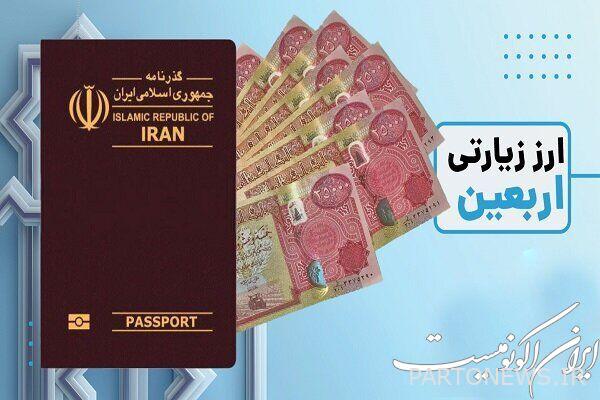Measures of the central bank in providing foreign currency to Hosseini pilgrims; Eliminate the queue and reduce the exchange rate

According to Iran EconomistIn recent years, with the departure of Hosseini pilgrims to Karbala, the long lines of buying and selling currency through the gaps created outside the border were criticized by the media and virtual networks, and this was only one side of the coin.
On the other side of the coin, there was an increase in the volatility of the currency market, which was expressed as the main factor in the analysis. In those years, buying dollars to travel to Karbala was cheaper than dinars, and applicants preferred to buy dollars and convert them to dinars in Iraq. For some years, there was no dinar in the market and people had to buy dollars from the exchange offices, and as a result, many officials and stakeholders stated that the pressure of demand during the Arbaeen days was an effective factor in the fluctuations and inflammations of the market.
But this year the conditions have changed and the central bank was able to remove the dollar from the basket of Karbala pilgrims and replace it with the dinar by injecting dinars into 6 banks.
The removal of the dollar made us no longer witness the fluctuation of the currency market and the price of the dollar continues to fluctuate in the channel of 48 thousand tomans, and according to “Mohsen Karimi”, the International Vice President of the Central Bank, before the start of the Arbaeen currency distribution, one thousand Iraqi dinars was equal to 36 thousand tomans in While the exchanges are willing to sell to the central bank at a rate of 32 thousand tomans, and of course the rate of the central bank is 31 thousand 500 tomans.
According to the latest statistics announced by the Central Bank, until the 8th of Shahrivar, 920,000 Arbaeen Hosseini pilgrims received their needed currency from 6 banks, Tejarat, Melli, Sepeh, Saderat, Parsian and Post Bank.
According to this report, this year the distribution of currency (banknotes) to pilgrims is a maximum of 200 thousand Iraqi dinars at a price of 6 million 200 thousand to 6 million 500 thousand tomans, which starts from August 28 and continues until the end of September 14.
To receive Arbaeen currency, people must first register in the “Samah” system and receive the tracking code. A tracking code is needed to receive currency, and people who have not registered in the Samah system will not be able to receive Arbaeen currency.
After receiving the tracking code, the applicants can go to the operating banks and receive their currency by bringing the original national card and passport or Arbain travel card. Arbaeen currency is given only to pilgrims over 18 years of age, and applicants to purchase Arbaeen currency have until 14th of September to refer to selected branches of Tejarat, Melli Iran, Sepeh, Saderat, Parsian and Post Bank.
Heads of households can purchase Arbaeen currency through the designated banks by having their identity documents (national card and birth certificate of the head of the household and national card of the household members) and valid passport (or Arbaeen travel card) of all family pilgrims.
The request to sell foreign currency for people over 18 years of age is done by checking the matching of national number, mobile number and bank card, and people between 5 and 18 years old can buy foreign currency with the mobile phone number of their parents or family members. Also, according to the order of the President in the last meeting of the government board, the central bank will pay the Arbaeen loan to the pilgrims in the form of Qarz-ul-Hasna to facilitate the affairs of the pilgrims.

